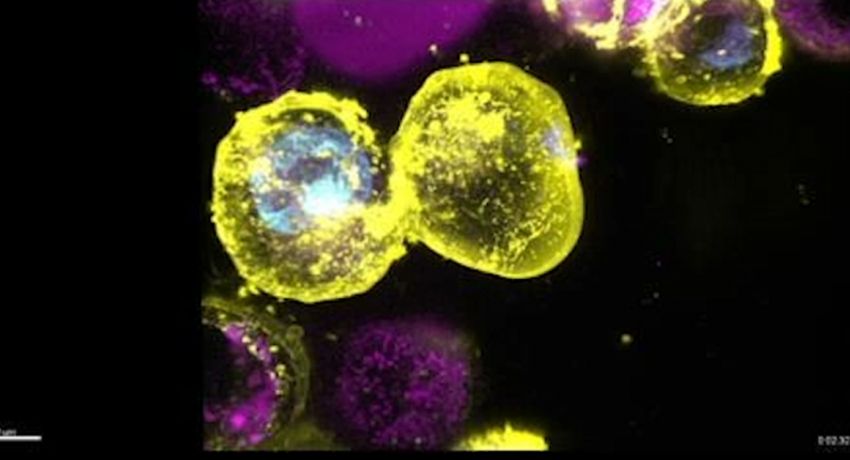Revealing how MLKL kills
Access to the Centre’s suite of imaging technologies has enabled WEHI researcher Dr Andre Samson to discover how the killer protein MLKL exerts its deadly job.
MLKL is a key player in the initiation of a specific type of cell death called necroptosis. This inflammatory cell death pathway is an important line of defence against infection but has also been linked to inflammatory diseases including dermatitis and inflammatory bowel diseases.
When Dr Samson started his study, it was known that MLKL travelled from cell’s cytosol the plasma membrane to execute necroptotic cell killing. However, the details how this happened remained elusive. Two years later, advanced imaging technologies have enabled Dr Samson and his colleagues to reveal important details about the mechanism of necroptotic cell death.





